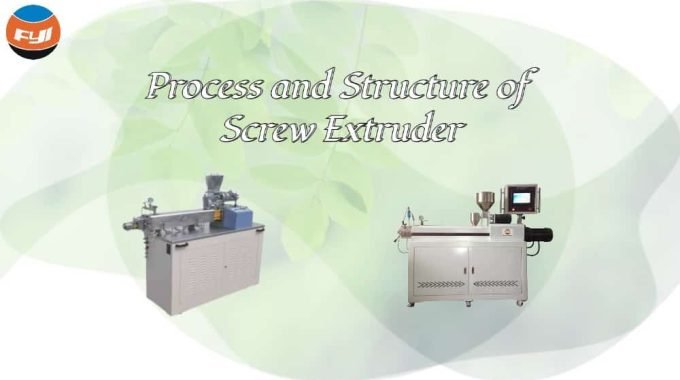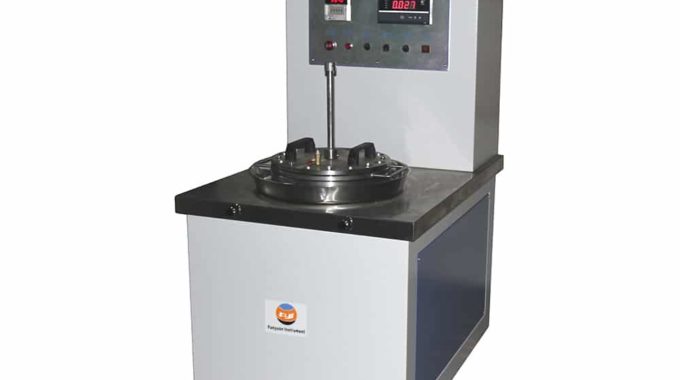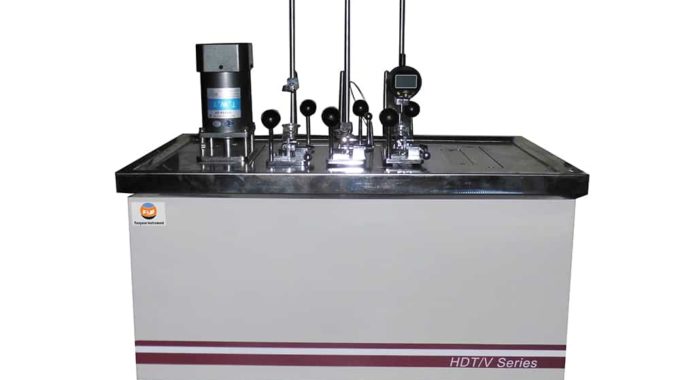
Process and Structure of Screw Extruder
Extrusion molding, also known as press molding, is a molding method that heats and melts the polymer solid material into a melt, and uses the extrusion effect of the screw to push the viscous fluid material through the die to form a continuous body with a cross-sectional shape similar to the die shape. The corresponding equipment is called a screw extruder.
Contents
Screw extruder extrusion process
Material (granules or powder) – added to the extruder – heated and transported forward – the material becomes a melt and is extruded – the melt enters the die head for molding – the molding sleeve is molded – cooled in the cooling tank – hauled – cut (or coiled)
Classification of screw extruder
- According to the number of screws, it can be divided into single-screw extruder and multi-screw extruder;
- According to whether it can be vented, it can be divided into venting extruder and non-venting extruder;
- According to the presence or absence of screws, it can be divided into screw extruder and screwless extruder;
- According to the position of the screw in space, it can be divided into horizontal extruder and vertical extruder.
Basic structure
The screw extruder is mainly composed of the following parts: main machine (extruder), die (extrusion die or mold), auxiliary machine (forming, cooling, traction, cutting, winding device), and control system (control of main and auxiliary machines).
Main machine (extruder)
The extruder consists of an extrusion system, a transmission system, a heating system and a control system. It is a key device in the extrusion molding process. Its specifications and process control directly affect the output and quality of the extrusion process.
- Extrusion system: It is composed of screw and barrel, and is the key part of the extruder. The material is plasticized into a uniform melt in the extrusion system, and moves forward under the pushing action of the screw, and is compacted and extruded.
- Transmission system: Its function is to drive the screw transmission and ensure the torque and speed required for the screw rotation. It consists of a reduction box and a motor.
- External heating and cooling system: To ensure the temperature requirements of the processing process, a heating ring is generally provided outside the barrel, and a cooling device is provided at the tail of the screw.
- Host control system: Controls the screw speed, barrel, screw, and head temperature.
Extrusion die
The die is the main component of product molding, through which the molten plastic obtains a certain geometric cross-section and size. The renewal of extruded plastic products and products is ultimately determined by the die and its shaping device.
Auxiliary machine
The auxiliary machine is composed of shaping device, cooling device, traction device, cutting device and product winding or stacking device.
- Shaping device: Its function is to stabilize the given shape of the plastic extruded from the die head and refine it to obtain a more accurate cross-sectional shape, size and bright surface. Usually cooling and vacuuming methods are used to achieve this purpose;
- Cooling device: The plastic coming out of the shaping device is fully cooled here to obtain the final shape and size;
- Traction device: Its function is to evenly pull the product and control the cross-sectional size of the product to ensure the stable extrusion process;
- Cutting device: Its function is to cut the continuously extruded product into a certain length or width;
- Winding device: Its function is to roll up soft products (films, hoses, monofilaments, etc.)
Control System
The control system of the extruder is mainly composed of electrical appliances, instruments and actuators, etc. Its main functions are:
- Control the traction motors of the main and auxiliary machines to meet the speed and power required by the process, and ensure that the main and auxiliary machines can operate in a coordinated manner;
- Control the temperature, pressure, flow rate and product quality of the main and auxiliary machines;
- Realize automatic control of the entire extruder group and quality control of the product.
Screw Extruder
Lab Screw Extruder can be applied to the mixing, plasticizing and extrusion of engineering plastics, modified plastics, masterbatch and other high polymers with the features of uniformly dispersed, plastics coloring and filling to modify. It can be used in laboratory tests, quality control, teaching research and small-scale production.

The efficiency of small extruder in laboratory is mainly reflected in high output, low energy consumption and low manufacturing cost. In terms of function, extruder has been not only used in polymer extrusion molding and mixing process, its use has been widened to food, feed, electrode, explosives, building materials, packaging, pulp, ceramics and other fields.
The modular production of small extruder can meet the special requirements of different users, shorten the research and development cycle of new products, and strive for greater market share. And specialized production extrusion equipment for each system module components can be arrange designated production even for global purchasing, this to ensure the quality of the whole period, reduce cost, accelerate the capital turnover is very favorable.
Here are the features of the screw extruder.
- Screw diameter options include 20mm, 25mm, 30mm, and 35mm, with a length-to-diameter ratio of 10-40 times (optional).
- The screws and charging barrel are composed of chromium-molybdenum alloy tool steel 40CrNiMo. They undergo nitriding, hardening and tempering, chromium plating, and ultra-precision grinding to provide high stiffness and resistance to abrasion and corrosion.
- The twin-screw is made up of construction blocks, including screw-conveying, milling, shearing, and remilling blocks. These screw components, which are made up of kneading blocks with varied alternative angles and widths, may provide varying shearing forces and provide the mixing effect necessary in the manufacturing of a range of materials. They can also be planned and mixed based on the material.
- Twin-screw elements are equipped with self-cleaning function, for example cleaning up each other when rotating at a high speed in order to reduce the waste of materials and cleaning time.


